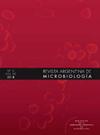检测从阿根廷腹泻儿童中分离出的 EPEC 和 STEC 菌株。
IF 2.1
4区 生物学
Q4 MICROBIOLOGY
引用次数: 0
摘要
通过聚合酶链反应 (PCR) 分析了儿科患者的直肠拭子(122 份),以检测 EPEC 和 STEC。对 STEC 分离物进行了 stx1、stx2、eae、saa 和 ehxA 检测。对所有 eae 阳性样本进行了 bfpA 检测,并使用凝集试验确定了抗原 O。检测 Int1 和 Int2 分别是为了确定是否存在 1 类和 2 类整合子。68% 的样本中检测到了大肠杆菌,其中 18.8% 是 STEC(2.45%)和 EPEC(16.3%)。发现了血清型为 STEC O145 和 EPEC O130、O113 和 O157 的菌株,还有三株菌株无法分型。在所有样本中均未检测到携带 tbfpA 和 1、2 类整合子的 EPEC 菌株。考虑到在分离出的 EPEC 和 STEC 菌株中发现的毒力特征以及与人类疾病相关的血清群,所获得的结果非常重要。本文章由计算机程序翻译,如有差异,请以英文原文为准。
Detection of EPEC and STEC strains isolated from children with diarrhea in Argentina
Rectal swabs (122) from pediatric patients were analyzed by polymerase chain reaction (PCR) for the detection of EPEC and STEC. STEC isolates were tested for the presence of stx1, stx2, eae, saa and ehxA. All eae-positive samples were tested for the presence of bfpA, and antigen O was determined using the agglutination test. Int1 and Int2 were detected to identify the presence of integrons class 1 and 2, respectively. Escherichia coli was detected in 68% of the samples, of which 18.8% were STEC (2.45%) and EPEC (16.3%). Serogroups STEC O145 and EPEC O130, O113 and O157 were observed, while three strains were non-typable. None of the EPEC strains carrying tbfpA and class 1 and 2 integrons was detected in any of the samples. The results obtained are important considering the virulence profiles found in the isolated EPEC and STEC strains and the serogroups associated with disease in humans.
求助全文
通过发布文献求助,成功后即可免费获取论文全文。
去求助
来源期刊

Revista Argentina de microbiologia
MICROBIOLOGY-
CiteScore
3.30
自引率
0.00%
发文量
46
审稿时长
>12 weeks
期刊介绍:
La Revista Argentina de Microbiología es una publicación trimestral editada por la Asociación Argentina de Microbiología y destinada a la difusión de trabajos científicos en las distintas áreas de la Microbiología. La Asociación Argentina de Microbiología se reserva los derechos de propiedad y reproducción del material aceptado y publicado.
 求助内容:
求助内容: 应助结果提醒方式:
应助结果提醒方式:


